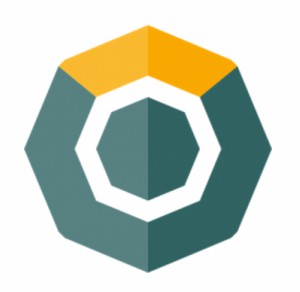Komodo (KMD) is an open-source cryptocurrency that was launched in 2016 after a successful ICO phase which ran from October 15 to November 20, 2016. It started out as an anonymous coin, evolved into a platform, and is now growing into an ecosystem of self-contained blockchains.
Komodo is the infrastructure coin of SuperNET, a platform that provides a framework for decentralized applications (DApps) and end-to-end blockchain solutions for developers. Its main focus is to provide anonymity using a “zero-knowledge proofs” protocol acquired from Zcash, and security through a novel Delayed Proof of Work (dPoW) protocol pioneered by Komodo developers.
The Komodo platform was designed to be flexible in order to give developers as much freedom as possible. Developers can use it to create independent blockchains of their own that are connected to the Komodo ecosystem, but aren’t limited by the platform’s parent chain.
Komodo Value, Market Cap and Volume
Since February 2017, Komodo’s market value has increased by more than 2,200%. KMD has quickly risen to become one of the top 50 cryptocurrencies by market cap and it’s showing no signs of slowing down.
Out of the maximum available supply of 200 million KMD, 100 million KMD were pre-mined and distributed during Komodo’s ICO phase. 90 million KMD went to investors and 10 million was kept aside for future development and marketing of the Komodo platform. The remaining coins can be mined by anyone by completing standard proof-of-work problems.
As of November 2017, there were 103,617,091 KMD in circulation with a market cap of $260,670,553. The value of 1 KMD hovered at around $2.5. Every KMD holder will automatically receive a 5% annual percentage rate (APR) bonus on their holdings until the 200 million hard cap is reached. Holders don’t have to do any special action to receive the bonus other than moving their KMD between wallets once a year.
How Komodo Works
To understand how the Komodo and SuperNET platform work, you should first understand three things:
- Zcash zk-SNARK protocol: Komodo was created by a Zcash fork in order to acquire Zcash’s innovative zero-knowledge Succinct Non-Interactive ARgument of Knowledge, or “zk-SNARK” protocol. The protocol gives Komodo lets users anonymize their transactions by hiding details about the sender, recipient, and the amount sent. It gives users the option to make their transactions 100% private or transparent depending on the situation.
- Delayed Proof of Work (dPoW) protocol: The dPow protocol is a brand new consensus mechanism that adds Bitcoin-level security to the Komodo blockchain. The protocol ensures that all Komodo blocks are notarized on the Bitcoin blockchain, which means any hacker who wants to tamper with a KMD transaction will first have to change the Bitcoin blockchain, which is virtually impossible.
- SuperNET platform: Komodo is part of a broader project called SuperNET. The platform needed an infrastructure coin that is anonymous and secure, and thus Komodo was born. SuperNET is similar to Ethereum in that it gives developers a platform for building dApps, but it utilizes dPoW and zk-SNARK protocols to give developers the tools to build secure blockchains of their own that can perform anonymous transactions.
Komodo vs Bitcoin
Due to the transparent nature of the Bitcoin blockchain, a user’s transactions can easily be traced if their wallet address is identified. Just think of how difficult it would be to start a new business using if your competitors could track all your purchases.
By adopting the zk-SNARK protocol, Komodo moves transactions in a privacy-oriented direction by offering users anonymity. The coin is still public and decentralized like Bitcoin, but users who want privacy can choose to leave “zero knowledge” of their transactions by hiding all identifying details.
Komodo’s developers also coded in the dPoW protocol to add an additional layer of security to the Komodo blockchain. Since all Komodo blocks are notarized on the Bitcoin blockchain, it’s practically impossible to alter KMD transactions. Komodo is effectively piggybacking on the Bitcoin network to become more secure.
Acquiring and Storing Komodo
There are several established cryptocurrency exchanges that trade Komodo coins, including Bittrex, CoinExchange, Cryptopia, Cryptox, and ShapeShift. Since there is currently no convenient way to buy KMD with fiat currency, trading other coins (ETH, BTC, LTC, etc.) for KMD is the easiest way to acquire Komodo coins. Before you trade your BTC for KMD, you first need to get a secure wallet for storing your coins.
Komodo Wallets
Ledger Nano S – This is the safest way to store Komodo coins because your private keys never leave the device. KMD can be bought and transferred from anywhere to your Ledger address. The only downside is that the Ledger device does not let Komodo holders claim their 5% APR bonus.
Komodo Swing Wallet – a bare-bones GUI wallet by Komodo’s developers. It is currently the most stable GUI wallet for KMD and is the recommended desktop wallet until the Agama Wallet matures.
Komodo Paper Wallet – SuperNET has a simple guide for making offline Komodo paper wallets.
Agama Wallet – Agama is the official Komodo desktop wallet. It’s an advanced multi-coin wallet that features a built-in exchange as well as a privacy-enhancing feature called Jumblr that anonymizes exchanges from other coins to KMD. This wallet is still in early beta and reportedly contains a lot of bugs.
Liquidity of KMD
KMD may not be as liquid as other crypto coins, but it’s not impossible to get rid of. While it is currently difficult to buy or sell KMD in exchange for fiat currency, you can easily trade your Komodo coins for BTC or other coins using crypto exchanges. A riskier but alternative option is to trade your coins for fiat currency or other cryptocurrencies with someone you trust.






